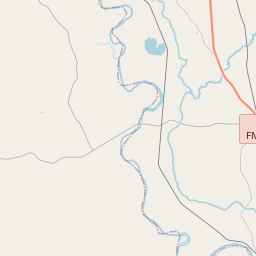Andrew (Rube) Foster
Historical marker location:






(September 17, 1879 – December 9, 1930)
Calvert native Rube Foster was a pioneer player, manager and executive in baseball’s Negro Leagues. The son of Rev. Andrew and Evaline Foster, he finished eighth grade in Calvert and pitched for the Waco Yellow Jackets and Fort Worth Colts from 1897 to 1902. Renowned for his fastball and screwball, he became a dominant pitcher on Midwest and Northeast championship teams, first with Frank Leland’s Chicago Union Giants and later on teams in Philadelphia, New York City, and Otsego, Michigan. Records show that he won more than fifty games in 1903 with the Cuban X Giants and in 1905 with the Philadelphia Giants. Foster wrote “How to Pitch” in Sol White’s Official Base Ball Guide: History of Colored Base Ball in 1907. His nickname “Rube” came from a great White pitcher of the day, G. E. “Rube” Waddell, whom Foster beat in an exhibition game. Foster became playing manager of the Leland Giants in 1907. Under his leadership, the team won 48 straight games and finished with a 110-10 record. His teams were known for successful bunting, base stealing, and hit and runs. In 1910, Foster organized his own team of all-stars and compiled a 128-6 record. His Chicago American Giants were a dynasty, winning eleven championships from 1911-22.
In 1920, Foster and owners of seven other clubs met in Kansas City, Missouri to form the first successful African-American professional baseball circuit; Foster was elected president. His American Giants won the Negro National League’s first three pennants. In 1926, Foster was admitted to Kankakee State Hospital in Illinois, where he stayed for four years before his death. Thousands of mourners attended his funeral in Chicago. Foster, the “Father of Black Baseball,” was elected to the National Baseball Hall of Fame in 1981.
(2008)
As one of the most visible programs of the Texas Historical Commission (THC), historical markers commemorate diverse topics in Texas history, including: the history and architecture of houses, commercial and public buildings, religious congregations, and military sites; events that changed the course of local and state history; and individuals who have made lasting contributions to the state, community organizations, and businesses.
More history nearby
Texas is known for its love of football, and the state has produced many great football players, including legends like Tom Landry, Earl Campbell, and Vince Young.
In 1837, the Texas Congress officially established Robertson County as one of the original counties of the Republic of Texas. During this time, the county experienced rapid growth with the influx of settlers from the United States, particularly from southern states such as Tennessee, Mississippi, and Alabama. These settlers primarily relied on agriculture, with cotton becoming a major cash crop in the region.
The county also played a significant role in the Texas Revolution and the subsequent formation of the Republic of Texas. The Battle of San Jacinto, a decisive battle that secured Texas independence from Mexico, took place just outside the county's borders in April 1836. Several notable figures from Texas history, including Sam Houston, were also closely tied to Robertson County.
Over the years, Robertson County has continued to thrive, with the economy diversifying beyond agriculture. While farming and ranching still remain important industries, the county has also seen growth in manufacturing, healthcare, and tourism sectors. Today, Robertson County is known for its small towns, rural beauty, and historical sites, attracting visitors and residents alike with its charming Southern atmosphere and rich cultural heritage.
Robertson County Timeline
This timeline provides a glimpse into the major events and milestones that have shaped the history of Robertson County, Texas.
- 1837: Robertson County is established from Milam County.
- 1846: The first county seat, Springfield, is established.
- 1854: The county seat is moved to Owensville.
- 1870: The town of Calvert becomes the county seat.
- 1873: The Houston and Texas Central Railway reaches Calvert.
- 1890: The St. Louis Southwestern Railway reaches Hearne.
- 1925: A portion of Robertson County is used to create Falls County.
- 1942: Camp Hearne, a World War II prisoner-of-war camp, is established.
- 1987: The Hearne Southern Pacific depot is added to the National Register of Historic Places.